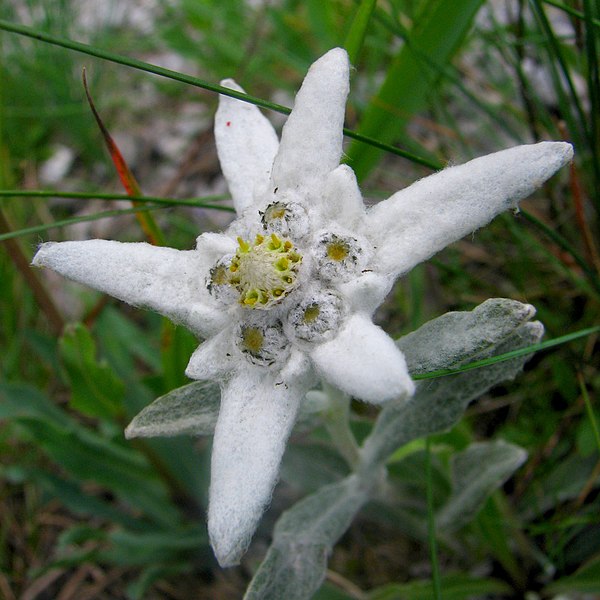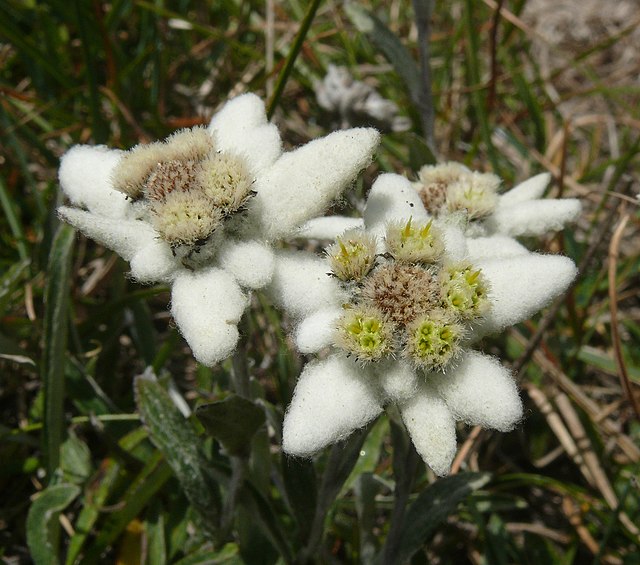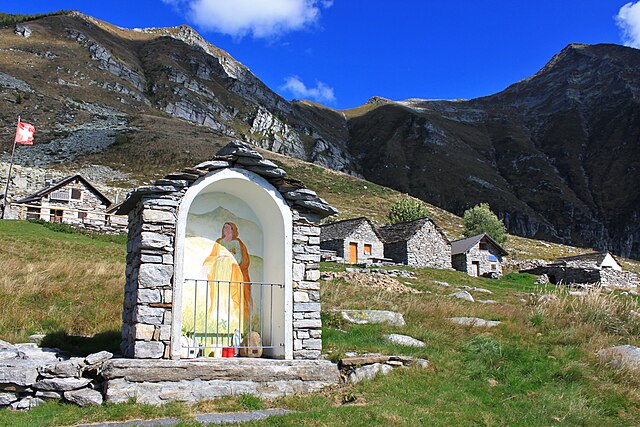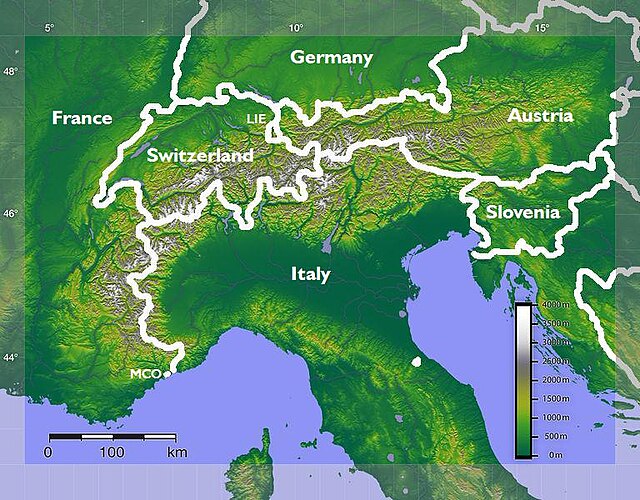Leontopodium nivale, commonly called edelweiss, is a mountain flower belonging to the daisy or sunflower family Asteraceae. The plant prefers rocky limestone places at about 1,800–3,400 metres (5,900–11,200 ft) altitude. It is non-toxic and has been used in traditional medicine as a remedy against abdominal and respiratory diseases. Its leaves and flowers are covered with dense hairs, which appear to protect the plant from cold, aridity, and ultraviolet radiation. It is a scarce, short-lived flower found in remote mountain areas and has been used as a symbol for alpinism, for rugged beauty and purity associated with the Alps and Carpathians. It is a national symbol of several countries, specifically Bulgaria, Austria, Slovenia, Switzerland, and Italy. In Romania it was declared a "monument of nature" in 1931. The Edelweiss day is celebrated on 5 March. According to folk tradition, giving this flower to a loved one is a promise of dedication.
Leontopodium nivale
Early-season version with central floret-pods not yet fully developed. Specimen found in Poland's Tatra Mountains.
Typical mid-season appearance. Specimen found in Italy's Bergamo Alps.
Late season version with "fat" appearance from flowered-out central floret-pods and from longer petal-"fuzz". Specimen found in the Stubai Alps.
The Alps are the highest and most extensive mountain range that is entirely in Europe, stretching approximately 1,200 km (750 mi) across eight Alpine countries : Monaco, France, Switzerland, Italy, Liechtenstein, Germany, Austria and Slovenia.
Satellite view of the Alps
The Dolomites (Italy) are a UNESCO World Heritage Site.
An "Alp" refers to a high elevation pasture frequented only in summer. It often includes several huts and small places of worship (here the Alpe Bardughè in Ticino).
The Alps extend in an arc from France in the south and west to Slovenia in the east, and from Monaco in the south to Germany in the north.








